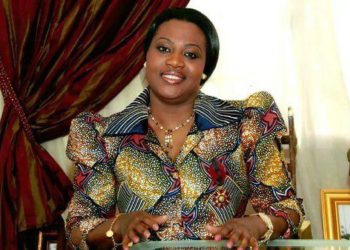To end the frequent collapse of the national grid, which it described as “old and weak”, the Federal Government has unbundled and offered it for privatisation.
Minister of Power Adebayo Adelabu stated this yesterday while reviewing the government’s activities in the electricity sector.
He spoke during his appearance at the 2025 Ministerial Press Briefing Series at the Radio House in Abuja.
The programme was moderated by Minister of Information and National Orientation Mohammed Idris.
Adelabu explained that there is a seven million consumer meter shortfall, which the government is bridging with a planned programme.
He also said no fewer than 80 million Nigerians out of an estimated 240 million population lack access to electricity.
According to him, the government has opened talks with some investors who have indicated interest in the operation of some aspects of the grid before the end of the year.
He said: “We have various offers from private investors. The national grid is owned 100 per cent by the government.
“But, I can tell you, with other ministries competing for funds, we cannot fund the national grid alone.
“It is an expanded national grid. It is too large and there are some dedicated lines in which some private investors have expressed interest.”
Adelabu believes private sector participation in grid management would not be difficult with the operation of the Nigerian Independent System Operator (NISO).
The minister said: “Let them finance construction of new lines, construction of new substations and introduction of new transformers.
“They will be able to benefit from the proceeds of the willing charges from the Distribution Companies (DisCos) and the Generation Companies (GenCos).”
He assured that the government will settle N2 trillion out of the N4 trillion indebtedness to GenCos before the end of the year.
He said he was already discussing with the Minister of Finance and Coordinating Minister of the Economy, Mr. Wale Edun, who has pledged to settle the debt with budgetary allocation and guaranteed instruments.
On how the debt was accumulated, he said the government subsidises 85 per cent of the N170 per kilowatt of electricity consumed by Nigerians on Band B to E.
The minister described half of the N4 trillion as legacy debts from the previous administration.
According to him, the 11 DisCos are not charging cost-reflective tariffs, a development he noted has restricted investment in the sector.
He said the local meter manufacturers lack the capacity for holistic production, other than assembling the parts.
“The rate at which we want to move in meter acquisition and procurement, they don’t have the capacity. What we have, 90 per cent of them are assemblages.
“They assemble completely knock-down parts, CKDs, or semi-knock-down parts, SKDs. They are not full manufacturers. Local content ranges from 10 to 40 per cent. So, we rely more on importation plus local supply.”
He said the launch of the Presidential Metering Initiative is backed by a N700 billion allocation, adding that the government targets the acquisition of 1.1 million meters by year-end.
“The procurement process has started, I can assure you, and we have a plan for two million meters annually for the next five years, and the procurement process has started.
“If we add two million meters annually, it’s 10 million meters, plus 1.1 for this year, that’s 11.1 million meters.”
He said the arrangement will cut off the national meter gap of about six to seven million through the World Bank-funded Distribution Sector Recovery Programme (DSTREP).
Over 3.2 million meters, he said, will be procured and installed alongside data management solutions for DisCo optimisation.
“Today, we have completed the procuring process of DSTREP, 75,000 meters have already arrived this month, and we expect an additional 200,000 meters in May.
“Before the end of this year, 1.3 million meters will come from the World Bank-funded DSTREP programme.”
The minister added that power generation peaked at 6,003 megawatts and evacuation at 5,801 megawatts last month.
The scale of national grid
The minister described the transmission line as a wide network of electrical installations across the length and breadth of the country, spanning over one million square meters of land mass.
He said: “The Nigerian transmission network currently comprises 92 lines of 330 kV covering 9,504 kilometres. Our 141 lines of 132 kV spanning 8,558 kilometres are interconnected through our 57 existing 33, 330, 132, 33 kV and 186, 132, 33 kv substations.
“That is over 250 substations across the country. This backbone infrastructure is supported by 91 power transformers of 330 kV voltage level with 14,978 MVA capacity and 392 transformers of 132, 33 kV providing 19,238 MVA capacity. Do you know what 1MVA means? It means two 500 kV transformers combined.
“That is 1MVA, and we are talking of almost 35,000 MVA capacity. So, it’s a huge grid to cover over 200 million people.”
He insisted that its maintenance and expansion history have been poor. “So, it is old,” he said.
The Nation











